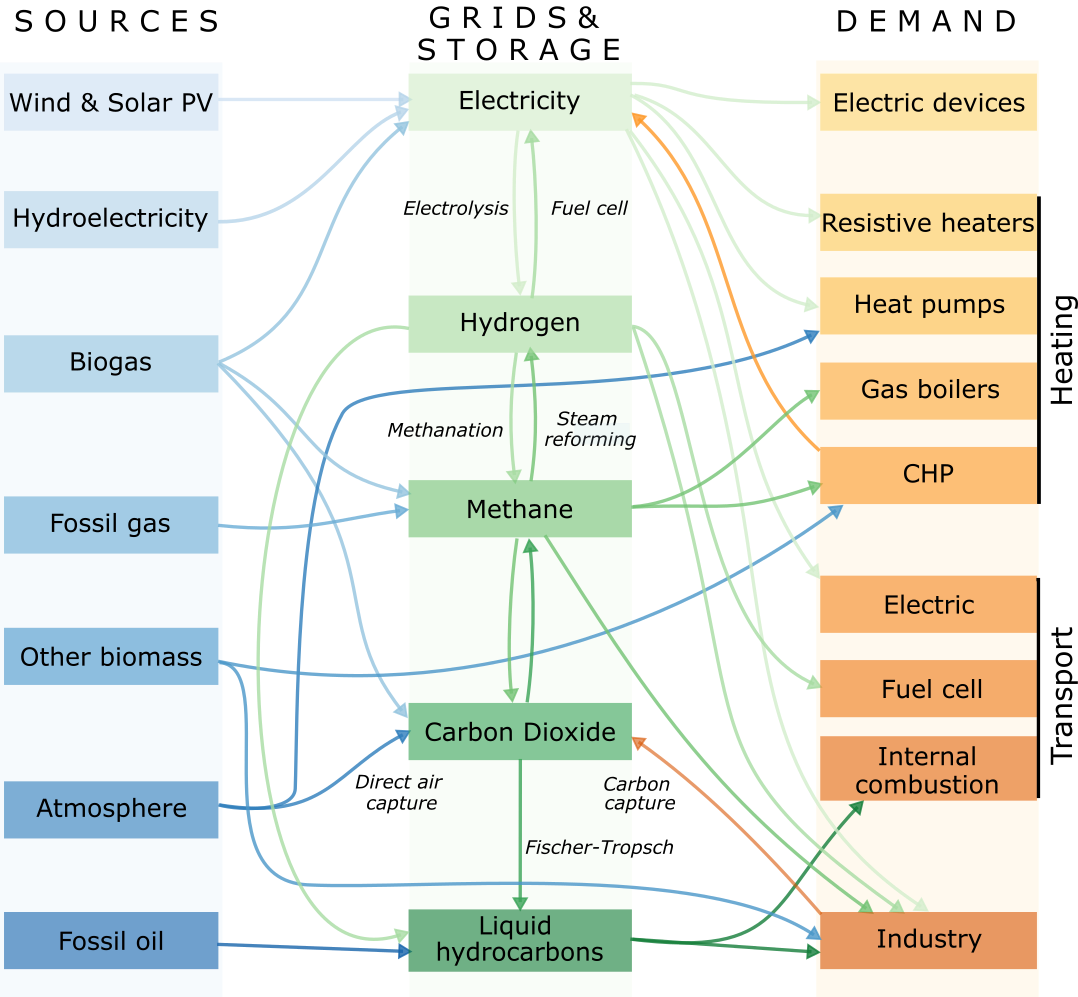| .github/workflows | ||
| data | ||
| doc | ||
| graphics | ||
| scripts | ||
| test | ||
| .gitignore | ||
| .syncignore-receive | ||
| .syncignore-send | ||
| config.default.yaml | ||
| LICENSE.txt | ||
| matplotlibrc | ||
| README.md | ||
| Snakefile | ||
PyPSA-Eur-Sec: A Sector-Coupled Open Optimisation Model of the European Energy System
PyPSA-Eur-Sec is an open model dataset of the European energy system at the transmission network level that covers the full ENTSO-E area.
PyPSA-Eur-Sec builds on the electricity generation and transmission model PyPSA-Eur to add demand and supply for the following sectors: transport, space and water heating, biomass, industry and industrial feedstocks, agriculture, forestry and fishing. This completes the energy system and includes all greenhouse gas emitters except waste management and land use.
WARNING: PyPSA-Eur-Sec is under active development and has several limitations which you should understand before using the model. The github repository issues collect known topics we are working on (please feel free to help or make suggestions). The documentation remains somewhat patchy. You can find showcases of the model's capabilities in the preprint Benefits of a Hydrogen Network in Europe, a paper in Joule with a description of the industry sector, or in a 2021 presentation at EMP-E. We cannot support this model if you choose to use it.
Please see the documentation for installation instructions and other useful information about the snakemake workflow.
This diagram gives an overview of the sectors and the links between them:
Each of these sectors is built up on the transmission network nodes from PyPSA-Eur:
For computational reasons the model is usually clustered down to 50-200 nodes.
PyPSA-Eur-Sec was initially based on the model PyPSA-Eur-Sec-30 described in the paper Synergies of sector coupling and transmission reinforcement in a cost-optimised, highly renewable European energy system (2018) but it differs by being based on the higher resolution electricity transmission model PyPSA-Eur rather than a one-node-per-country model, and by including biomass, industry, industrial feedstocks, aviation, shipping, better carbon management, carbon capture and usage/sequestration, and gas networks.
PyPSA-Eur-Sec includes PyPSA-Eur as a snakemake subworkflow. PyPSA-Eur-Sec uses PyPSA-Eur to build the clustered transmission model along with wind, solar PV and hydroelectricity potentials and time series. Then PyPSA-Eur-Sec adds other conventional generators, storage units and the additional sectors.
Licence
The code in PyPSA-Eur-Sec is released as free software under the
MIT License, see LICENSE.txt.
However, different licenses and terms of use may apply to the various
input data.




